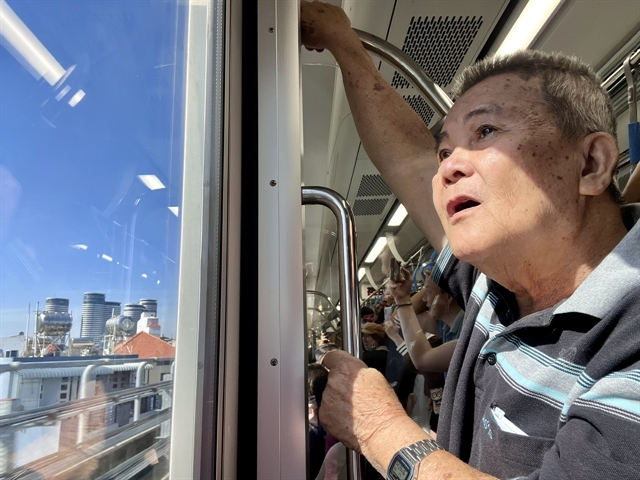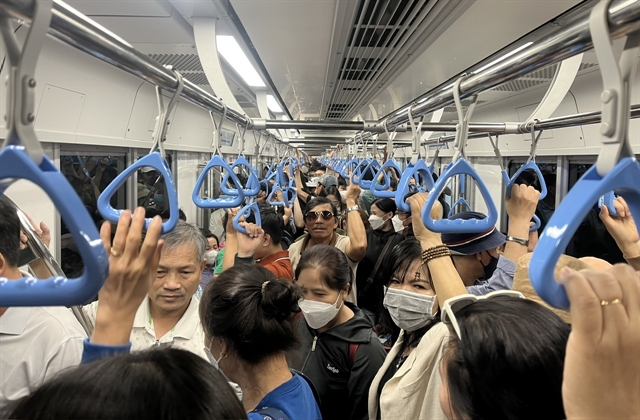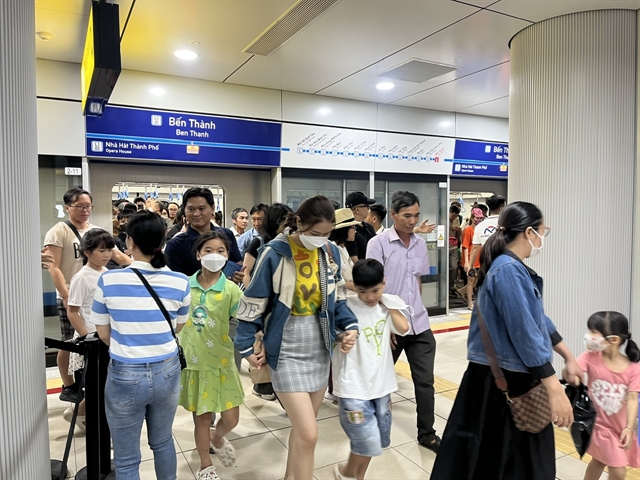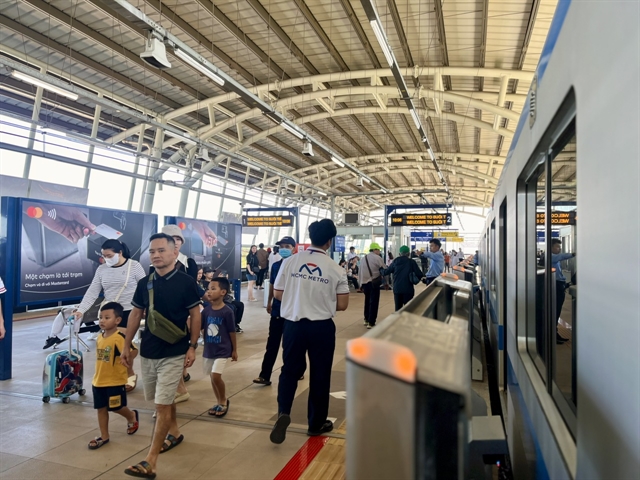Việt Nam’s largest city has been buzzing with excitement over the past week as the Bến Thành - Suối Tiên metro line was finally opened to the public on December 22 after years of delay.

Eighty-year-old veteran Nguyễn Văn Đảm gazes at HCM City’s landscape from the window of the city’s first metro line on Sunday. — VNS Photo Bồ Xuân Hiệp
Bồ Xuân Hiệp
HCM CITY — For many, including 80-year-old veteran Nguyễn Văn Đảm, the moment that HCM City, where he has lived for over 50 years, opened its first-ever metro line is particularly poignant.
Việt Nam’s largest city has been buzzing with excitement over the past week as the Bến Thành - Suối Tiên metro line was finally opened to the public on December 22 after years of delay.
The atmosphere remains electric as residents have been flocking to the metro, which took 17 years to complete.
“I’ve waited 17 years for this metro line to come to life, and after 12 long years of construction, it’s finally here,” Đảm told Việt Nam News with a gleam of joy in his eyes.
“At my age, I never thought I’d witness such modern infrastructure in my lifetime. This is truly thrilling for me and everyone in the city.”
The 19.7-km metro has already welcomed over 900,000 riders in just its inaugural week, with an average of around 113,500 passengers each day, eager to experience this new mode of transportation.
The weekend saw a peak, with nearly 201,000 people riding the trains on Sunday alone, a figure that far exceeds the operators’ initial estimate of 39,000 daily riders.
With free rides currently offered, locals are seizing the opportunity to explore the new line, with some hopping on multiple times in a single day.
The experience is made even smoother with friendly staff on hand to guide passengers through the gates.
However, during peak hours, some stations are bustling with activity, prompting the HCM City Urban Railway Company No. 1 (HURC1) to deploy extra personnel to assist the excited crowds.
The metro operates nine trains daily, running around 200 trips between 5am and 10pm, with trains arriving every eight to 12 minutes.
A journey from Suối Tiên Theme Park in Thủ Đức City to lively Bến Thành Market in District 1 takes around 30 minutes, with brief stops at each station along the way.

Passengers wait to board HCM City's first metro line at Bến Thành station in District 1. — VNS Photo Bồ Xuân Hiệp
Cao Thị Bích Vân, 50, who sells noodle soup at Bến Thành Market, said: “Many of my regulars from Thảo Điền in Thủ Đức City now tell me they can take the metro to Bến Thành in just 15 minutes for a bowl of my soup!”
The metro will remain fare-free until January 20, 2025. After that, passengers can choose from a variety of ticket options, including single, one-day, three-day, and monthly passes.
Fares will be affordable, ranging from VNĐ7,000 to VNĐ20,000 based on distance, with discounts for students and free rides for the elderly and disabled.
Payment options are convenient, allowing passengers to scan a QR code via the HCM City Metro HURC app or use bank cards.
Local resident Đỗ Văn Phú, 38, from Bình Thạnh District, said: “Living in Bình Thạnh, I never thought I could reach Bến Thành Market in just a few minutes.”

Passengers inside a HCM City metro train on Sunday. The metro has already recorded over 900,000 riders within its first week of operation. — VNS Photo Bồ Xuân Hiệp
The Bến Thành – Suối Tiên metro line, approved in 2007, faced numerous challenges that delayed its completion, including financial constraints.
With an investment of VNĐ43.7 trillion ($1.72 billion), the line features 14 stations, including three underground in the bustling city centre.

Passengers disembark at Bến Thành station in District 1. — VNS Photo Bồ Xuân Hiệp
Việt Nam is known for its vibrant motorbike culture, and its major cities such as HCM City and Hà Nội are currently struggling with worsening traffic congestion.
In HCM City, the population has surged from 5.3 million in 2000 to over 9.2 million in 2021, leading to increased motorbike and car registrations, straining the existing traffic infrastructure.
The implementation of the metro aims to meet the growing travel demands of residents and is expected to encourage more people to switch from personal vehicles to public transport.
Hà Nội, the capital of Việt Nam, inaugurated Việt Nam’s first metro service, the Cát Linh - Hà Đông metro line, in 2021, a decade after construction began.

Passengers at Suối Tiên station in Thủ Đức City. — VNS Photo Bồ Xuân Hiệp
“As someone who has witnessed this city evolve over nearly 50 years since liberation, it feels like a dream come true,” shared 80-year-old veteran Đảm with Việt Nam News. — VNS